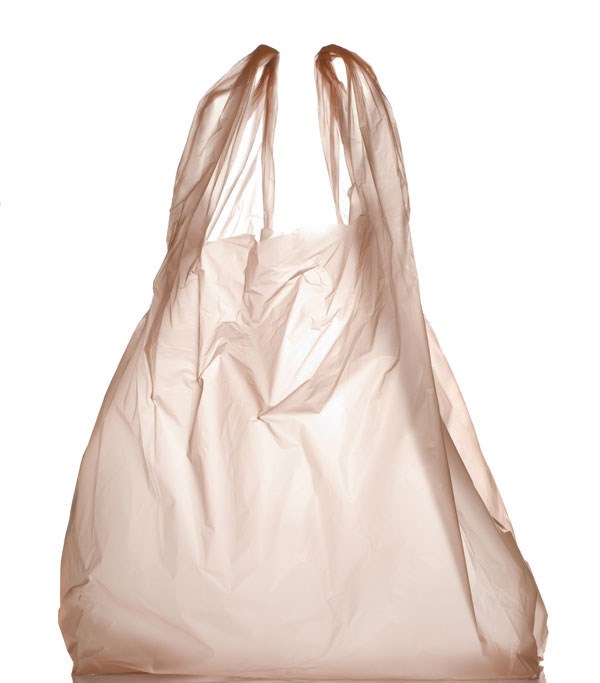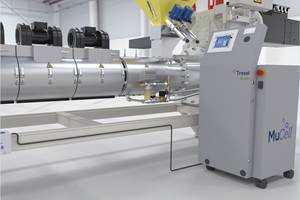Plastic Bag Bans: The Trend That Can’t Stop, Won’t Stop?
On April 28, the European Parliament gave its final approval for the previously agreed legislation to reduce the use of single-use plastic carrier bags.

On April 28, the European Parliament gave its final approval for the previously agreed legislation to reduce the use of single-use plastic carrier bags.
EU member states have a choice: either to take measures to reduce annual average consumption of plastic bags to 90 lightweight bags per citizen by the end of 2019 and to 40 by the end of 2025; or ensure that by the end of 2018, no more lightweight plastic bags are handed over free of charge to shoppers.
Bag bans aren’t just reserved for the EU as several U.S. cities have also banned plastic bags and the list seems to keep growing. And while there are stories that come along such as Arizona announcing it has passed a ban on the bans of plastic bags (did you get that?), there’s somewhere like Sacramento announcing the city will enact a plastic bag ban.
In other words, plastic bag bans are not going away anytime soon.
It’s estimated that the U.S. goes through 100 billion plastic shopping bags annually. The average person uses about 326 plastic grocery bags per year. In 2012, the category of plastics, which includes bags, sacks, and wraps was recycled at about 12%, according to the EPA. Plastic bags are 100% recyclable, but there are currently a lot of factors working against the lightweight packaging. For example:
HUMAN ERROR
People leaving their bags behind and as a result, plastic bags are found on the side of highways, in the ocean and just about everywhere else you can think of. Stop being trashy, people!
PROBLEMS WITH MACHINERY
Some people try to do the right thing by putting plastic bags in the recycling bins, but they are unknowingly creating another issue. The bags often clog the sorting machinery at recycling facilities, forcing workers to shut down the process to remove the tangled bags. Most recycling facilities are set up to handle rigid materials such as aluminum cans, glass bottles, plastic containers and lids, metal cans, cardboard/paper, etc. Plastic bags require a different collection system and processing equipment that many curbside recycling programs don’t provide.
GROCERY STORE DROP OFF - POSSIBLE ANSWER?
There is some movement on recycling plastic bags. Many retail chains such as Walmart and Target do provide collection bins for plastic bags at their main entrances. Novolex Hilex Poly’s Bag-2-Bag recycling program collects more than 40 million pounds of post-consumer bags and film each year. Collected bags are gathered into bales and transported to the Novolex recycling center in North Vernon, IN.
Novolex says on its website that Bag-2-Bag works best when stores have two key factors working for them. “First, they have access to a logistics system that can back haul the bags for consolidation and baling. This typically happens with a chain of stores,” the company said. “Secondly, Bag-2-Bag works best with stores where customers visit them on a weekly basis so that recycling can become part of their routine. This is why the most successful programs have been with grocery stores.”
While the retail collection model is working to an extent, we all know that plastic bag recycling must increase as a whole.
THE FUTURE?
Perhaps Materials Recovery Facilities (MRFs) could invest in equipment that enables them to recover plastic bags in the MRF environment. But that is costly.
Another potential solution: plastics-to-oil. Researchers at the University of Illinois claim that plastic bags can be converted into diesel fuel and other petroleum products. Previous studies have used pyrolysis to convert plastic bags into crude oil. However, the university researchers fractionated the crude oil into different petroleum products and tested the diesel fractions to see if they complied with national standards for ultra-low-sulfur diesel and biodiesel fuels. The researchers were able to blend up to 30% of their plastic-derived diesel into regular diesel, “and found no compatibility problems with biodiesel,” according to the university.
Perhaps one of those solutions will lead the charge to stop the plastic bag ban trend? Time will tell.
Related Content
Shredding Thin Film: How to Do It Right
While many processors recoil at this task, a little know-how in shredding equipment, processing, and maintenance should add the necessary confidence.
Read MoreFoam-Core Multilayer Blow Molding: How It’s Done
Learn here how to take advantage of new lightweighting and recycle utilization opportunities in consumer packaging, thanks to a collaboration of leaders in microcellular foaming and multilayer head design.
Read MoreHow to Optimize Color Evaluation of Recycled Plastics
The right color measurement instrument and good working methods will minimize variability in color evaluation of PCR.
Read MoreInside the Florida Recycler Taking on NPE’s 100% Scrap Reuse Goal
Hundreds of tons of demonstration products will be created this week. Commercial Plastics Recycling is striving to recycle ALL of it.
Read MoreRead Next
People 4.0 – How to Get Buy-In from Your Staff for Industry 4.0 Systems
Implementing a production monitoring system as the foundation of a ‘smart factory’ is about integrating people with new technology as much as it is about integrating machines and computers. Here are tips from a company that has gone through the process.
Read MoreFor PLASTICS' CEO Seaholm, NPE to Shine Light on Sustainability Successes
With advocacy, communication and sustainability as three main pillars, Seaholm leads a trade association to NPE that ‘is more active today than we have ever been.’
Read MoreMaking the Circular Economy a Reality
Driven by brand owner demands and new worldwide legislation, the entire supply chain is working toward the shift to circularity, with some evidence the circular economy has already begun.
Read More













